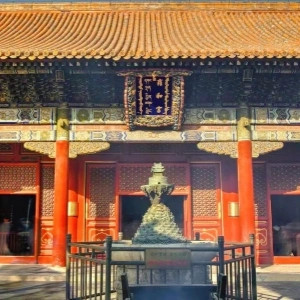Introduction to Chinese Shadow Puppetry
Chinese shadow puppetry, or Pí Yǐng Xì (皮影戏), is one of the most captivating and ancient forms of storytelling in China. Originating over 2,000 years ago, this unique art form blends shadow play with vivid storytelling, music, and visual artistry. Chinese shadow puppetry has evolved into an important aspect of Chinese cultural heritage, and it continues to enthrall audiences around the world today. In this article, we’ll explore the history, the techniques behind it, the regional styles, and where you can experience this magical art form in China.
If you want to know more about Chinese arts and crafts, please contact us. Popular Tour Packages in China:
The Origins and History of Chinese Shadow Puppetry
Chinese shadow puppetry has a rich history that dates back to the Han Dynasty (206 BCE - 220 CE). The art form is believed to have originated from the practice of shadow play, where performers used leather or paper cutouts to create shadow figures on a screen. The art form was initially used for entertainment and later evolved into a way to tell historical stories, mythological legends, and moral lessons.
According to legend, Chinese shadow puppetry was invented after a grieving emperor sought a way to summon the spirit of his deceased wife. He asked his courtiers to create shadows that resembled her, leading to the birth of this unique form of art. The craft soon spread across China and became especially popular during the Tang Dynasty (618–907 CE) and Song Dynasty (960–1279 CE).
How Chinese Shadow Puppetry Works
The technique behind Chinese shadow puppetry is as fascinating as the performances themselves. Here’s how it works:
The Puppets: The puppets are typically made from thin leather or plastic and are intricately carved to depict characters, animals, or objects. The puppets are painted with bright, vibrant colors, showcasing traditional Chinese motifs.
The Stage: A translucent screen is set up, and a light source is placed behind it. The light casts shadows of the puppets onto the screen, which is visible to the audience on the other side.
The Puppeteers: Skilled performers manipulate the puppets using rods or strings from behind the screen, creating the illusion of movement. The puppeteers also often narrate the stories, voicing the characters and singing traditional tunes, bringing the performance to life.
The Music: Traditional Chinese instruments such as the pipa (Chinese lute) and erhu (Chinese two-stringed fiddle) are used to enhance the atmosphere, often creating a dramatic, emotional connection between the audience and the story.
Themes and Stories in Chinese Shadow Puppetry
Chinese shadow puppetry performances feature a wide range of themes, often reflecting the culture and history of China. Some of the most common stories include:
Historical Epics: Tales of great emperors, warriors, and legendary figures such as Zhao Kuangyin and Yue Fei.
Mythological Stories: Narratives from Chinese folklore, such as the Journey to the West and stories about gods, immortals, and demons.
Folk Tales and Morality Plays: Short plays and stories that focus on Chinese moral lessons, such as loyalty, bravery, and wisdom.
Romantic Tragedies: Performances that explore themes of love and sacrifice, often rooted in ancient folklore.
Regional Variations in Shadow Puppetry
Though the basic principles of Chinese shadow puppetry remain the same, different regions of China have developed their own distinctive styles:
Henan Style: This is one of the oldest forms of Chinese shadow puppetry. The puppets used in Henan-style performances are large, detailed, and often made from camel or cowhide. The performances are slow-paced and emphasize dramatic storytelling.
Sichuan Style: Known for its fast-paced action and the use of more complex puppets, Sichuan shadow puppetry is famous for incorporating face-changing performances, where puppeteers quickly swap characters to create surprising twists in the story.
Shandong Style: This style is known for its larger puppets and vibrant, expressive performances. Shandong shadow puppetry often involves multiple puppeteers working together to create a coordinated and dynamic performance.
Guangdong Style: This region is renowned for its light-hearted and comic performances, with a focus on humor and lively music.
Chinese Shadow Puppetry Today
Chinese shadow puppetry may have ancient roots, but it continues to thrive in modern-day China. It is celebrated as a part of the country’s intangible cultural heritage and has even made its way into international festivals. Despite the rise of modern forms of entertainment, shadow puppetry remains a beloved traditional performance art.
You can experience shadow puppetry performances in various ways:
Cultural Festivals: Many cities host annual cultural festivals where shadow puppetry performances are a central feature. These festivals often feature puppeteers from across China, allowing visitors to experience different regional styles.
Traditional Theaters: Major cities like Beijing, Xi’an, and Hangzhou have theaters that host regular shadow puppetry shows, where you can watch performances by skilled puppeteers.
Cultural Museums: In places like Luoyang and Pingdingshan, museums dedicated to Chinese folk art and history often feature exhibits on shadow puppetry, showcasing puppets and artifacts from different periods.
Workshops: Some cultural centers offer hands-on workshops where you can learn to make your own shadow puppets and try performing with them.
Why You Should Experience Chinese Shadow Puppetry
Here are some compelling reasons why you should make time to experience this art form:
Cultural Significance: Chinese shadow puppetry offers a unique glimpse into the country’s ancient traditions and folklore.
Visually Captivating: The delicate puppets, combined with the shadows they cast, create a mesmerizing visual experience that is unlike any other.
Multisensory Performance: The combination of storytelling, music, and puppetry creates a rich, multisensory experience that immerses audiences in the world of the performance.
Related Posts
Create Your Customized Trip
Take about 2 minutes to fill the form to tell us how you like to travel, and get a reply within 1 working day.









